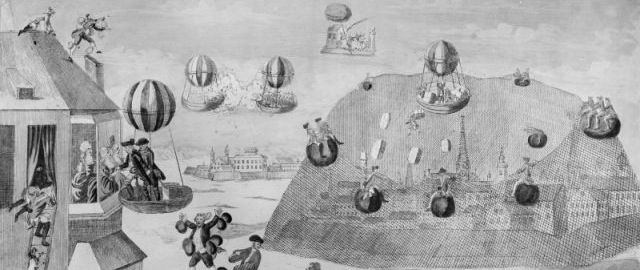Below is an overview of my main research interests. You can see more details of these ideas and what I’m working on under the Projects page and the Publications page.

My research focuses broadly on the ‘Age of Revolutions’ in Europe and North America in the eighteenth and nineteenth centuries. In particular, my PhD thesis entitled ‘Empires on the Edge – The Habsburg Monarchy and the American Revolution 1763-1789’ explored the rich, but largely overlooked, relationship between the most autocratic state in Europe, the Habsburg Monarchy, and the newly declared republic of the United States of America.

Connections between the Habsburgs and the United States existed across diplomatic, economic, and intellectual lines despite the apparent conflict in ideologies. Statesmen, merchants, and ordinary people across the Habsburg Monarchy were influenced by the American Revolution and this influence in turn had repercussions domestically and internationally.

The primary purpose of this project is to uncover this dynamic and by doing so, to expand our historical vision of the American Revolution and American Founding; to develop a more globally entangled history of Central Europe; and to push beyond the confines of the ‘Atlantic World.’

- Unknown, Bandiera de Bastimenti Mercanti Imperali (Vienna, ca. 1749)
From my doctoral research I have also developed an interest in early modern maritime trade, especially in the Mediterranean but also the Austrian Netherlands. Trieste, Livorno, and Cadiz are ports with substantial transatlantic trade but without a firm presence in Atlantic historiography. One of my hopes is to develop our understanding of the goods, networks, and volume exchanged between these ports and the American colonies.

I also have a deeper interest in the reception of all European nations to the American Revolution, especially the Mediterranean and Eastern Europe. Neutral powers in the War of American Independence have been overshadowed or their involvement limited to a few scant volunteers, Kościuszko in the case of Poland for example. Whilst I’m interesting in those who oscillated between Europe and America, I am keen to apply the same approach to encompass the diplomatic, economic, and intellectual ties to these countries.

Two eighteenth-century travellers have also captivated me recently: Maria von Born and Count Karl von Zinzendorf. The former since she led one of the most dramatic lives of any eighteenth-century woman from the salons of Vienna on the Danube to Fort Niagara on Lake Ontario and the latter for his 1768 tour of Great Britain, especially his month spent in Scotland. Both journeys I believe deserve properly historical treatment and a greater audience.

The Habsburg Monarchy contained some of the most vibrant and international scientific communities in enlightened Europe. The development of scientific thought in the Habsburg Monarchy greatly interests me. In essence I am fascinated in how eighteenth-century scientists, experimentalists, and lay-people developed an understanding of the natural world around them. How did they seek to harness it, from lightning in the sky to potatoes in the ground?

Finally, Habsburg participation in colonial science is a key interest which I am keen to develop further. The Habsburg botanical expedition to North and South America is most well known (to me and historiography) but its extension to Southern Africa by two intrepid gardeners, Franz Boos and Georg Scholl (who spent ten years at the Cape of Good Hope), presents an even richer history of global Habsburg history.
Remember more outlines of these interests can be found under the Projects page.